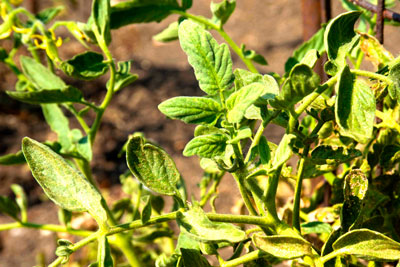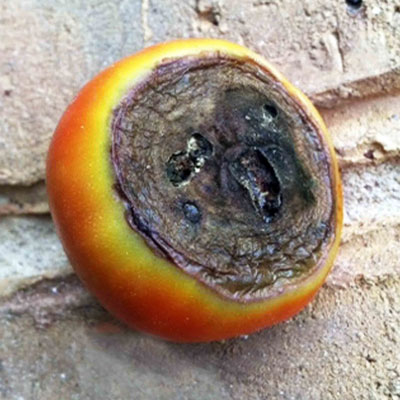Question of the Week: Tomatoes Not Setting
“My tomato plants aren’t setting fruit, and the plants look terrible as well. They’re burning up from their bases.”
Actually, the question was more involved as it was posted on my Facebook page a few days ago. And as it was asked of me by a friend. And as it came through on a radio broadcast.

Here’s a compilation:
“Neil! My tomatoes have only set a few fruit. I haven’t seen many pollinators. I’ve been using 13-13-13 fertilizer, but they’re not growing. The lower leaves are turning brown and falling off. I started out with many varieties including several heirlooms and others that a neighbor gave me. What can I do?”
The best way I could answer all those various aspects was to deal with them individually.
• Start with recommended varieties. Texas A&M vegetable specialists suggest small to mid-sized types because they will set fruit better in hot weather. Large-fruiting types quit setting when temperatures climb above 90F.
• Plant early (around the date of the last killing freeze for your part of Texas).
• Unless a soil test from a recognized testing lab such as the one at Texas A&M recommends otherwise, use an all-nitrogen fertilizer each time that you feed your tomatoes. It has been found that Texas garden soils have accumulated excessive amounts of phosphorus. Many soils have so much phosphorus that it has a detrimental effect on the plants. We must not add any more.
• Tomato flowers are pollinated by mechanical vibration. Generally, that means by the wind. If we have plants growing up against a fence or wall, it may be our responsibility to thump the flower clusters every couple of days to shake pollen loose within them. Bees, hummingbirds and butterflies are of no use to tomatoes.
• Those browned lower leaves can be caused by either early blight or spider mites.
• Early blight usually appears with thumbprint-sized yellow blotches on the lower leaves. The disease progresses upward fairly quickly, and afflicted leaves soon turn brown and crisp, then fall. Apply a labeled vegetable fungicide as soon as you identify the problem. Be aware that the early blight fungus may continue to spread for a few days more after you spray.

• Spider mites usually show up a couple of weeks after early blight, often in late May to mid-June. Lower leaves will begin to turn tan, and on close inspection you’ll notice that there is fine mottling. If you thump one of those mottled leaves over a sheet of white paper you’ll see the mites start to move around briskly. Apply a labeled insecticide to both top and bottom leaf surfaces. Repeat weekly as needed.

• If you see sunken, brown areas on the ends of the fruit farthest from their stems, that’s called “blossom-end rot” and it’s usually caused by letting the plants get too dry between waterings. You will read that it can also be due to a calcium deficiency, so if you’re in an acidic, sandy soil, you may want to add calcium if you’re seeing this issue. But in my experiences, it very rarely is due to a lack of calcium. In fact, I most commonly see it with tomato plants that are being grown in containers rather than in the ground. They are being allowed to get too dry between waterings. The blossom end is the point that dries out first and that gets water last, so that’s where the tissue damage is done. More uniform watering usually solves it all.
